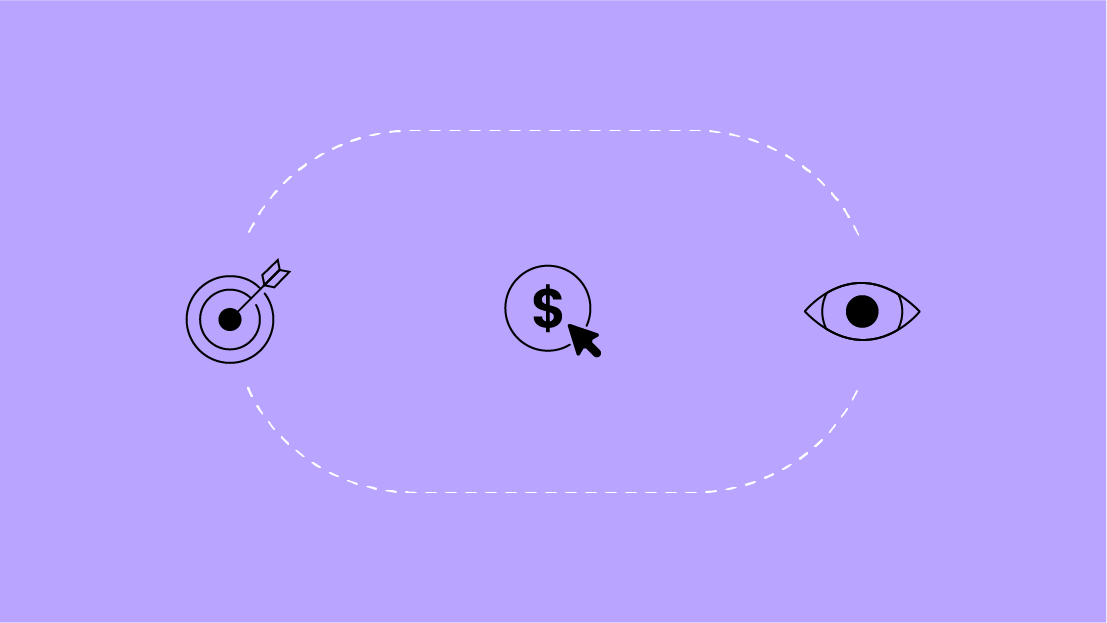06 Jan

Managing a client account isn’t just about the day-to-day, it’s also about pulling back the lens to see the larger, long-term impact that strategies can have on helping a client reach their campaign goals. After making targeting refinements in prior months and seeing an improvement in in-engine lead campaign performance as a result, we recently identified a low-lift, high-impact opportunity to further reduce costs while also increasing total lead volume for a client on LinkedIn.
Background
Previous to our partnership, the account strategy had focused on using the Lead Generation campaign objective for whitepapers, eBooks, and other industry-related content downloads, but not for webinars and other virtual events*. Instead, campaigns promoting webinar and event registrations had historically utilized the Website Conversion campaign objective to generate on-site signups, which were the same campaigns we were seeing high costs and low conversion volume for.
Because users at this stage in the lead journey were likely already familiar with who the client was and what products and services they offered before registering to attend an event, we theorized that by switching to Lead Generation campaigns (combined with our recent targeting revamp), we could drive an increase in lead volume while also spending the budget more efficiently.
Lead Generation campaigns allow advertisers to quickly collect prospective leads with pre-filled, in-engine lead forms that are populated with LinkedIn profile data, letting users submit their contact information with just a few clicks.
Keeping users on-platform and offering a pre-populated form improves the user experience by reducing distractions they may face while visiting the ad’s landing page, and prospective leads integrate seamlessly with a variety of CRM tools, allowing for easy access and management for the advertiser.
*Sponsored Content
Our Approach
Months before we made the recommendation to move away from Website Conversion-optimized campaigns, we had already laid the foundation for success by refining the audience targeting, running multiple ad variations for each campaign, and building and utilizing various retargeting audiences.
Account Cleanup
- First, we worked with the client to understand and develop a standard list of targeting inclusions and exclusions that could be implemented for all campaigns, allowing us to begin spending our budget more efficiently by focusing on reaching high-quality prospects before the full move to Lead Generation-optimized campaigns was made.
- Then, we worked with the client to develop multiple ad copy variations and align creative with best practice recommendations to help guide their internal creative team while developing the images for each campaign. Prior to our partnership with the client, each campaign only had one ad variation (LinkedIn best practice is to run 2-4 ad variations per campaign).
- Finally, we began to utilize website and ad engagement retargeting audiences for webinar and event campaigns to be layered with our standard targeting parameters.
[TIP]
While website leads are typically more expensive, they’re often higher quality than in-engine leads. In-engine leads tend to drive higher volumes at lower costs, but aren’t always high quality. To combat this and ensure that your Lead Generation campaigns generate high-quality leads, we recommend establishing standard targeting inclusions and exclusions for your audience(s) that can quickly be implemented for each campaign, such as job seniorities, job functions, and competitors. From here, you can add additional targeting layers when needed, such as company lists or retargeting audiences.
A Deeper Look
After our account cleanup, we pulled “cost per” metrics with a 90-day lookback window- the average cost per website conversion was 158% higher than the average cost per lead, while the total conversion volume was 195% lower than the total lead volume.
After seeing both performance and lead quality improvement across both Sponsored Content and Sponsored Message campaign types after our targeting recommendations were implemented, we theorized that there was an opportunity to spend our budget even more efficiently by moving away from Website Conversion-optimized campaigns altogether.
Results
These MoM results highlight the changes in performance following the migration from Website Conversion-optimized campaigns to Lead Generation-optimized campaigns for Sponsored Content campaigns:
Sponsored Content, MoM
|
Metric |
August |
September |
% Change |
|---|---|---|---|
|
Lead Form Completion Rate |
8.43% |
13.50% |
60.1% |
|
Cost Per Lead |
$374.22 |
$264.49 |
-29.3% |
|
Click-Through Rate |
0.3% |
0.4% |
33.3% |
Want to learn more about Lead Generation campaigns on LinkedIn?
Source: www.seerinteractive.com, originally published on 2023-01-06 07:30:00
Connect with B2 Web Studios
Get B2 news, tips and the latest trends on web, mobile and digital marketing
- Appleton/Green Bay (HQ): (920) 358-0305
- Las Vegas, NV (Satellite): (702) 659-7809
- Email Us: [email protected]

© Copyright 2002 – 2022 B2 Web Studios, a division of B2 Computing LLC. All rights reserved. All logos trademarks of their respective owners. Privacy Policy

![How to Successfully Use Social Media: A Small Business Guide for Beginners [Infographic]](https://b2webstudios.com/storage/2023/02/How-to-Successfully-Use-Social-Media-A-Small-Business-Guide-85x70.jpg)



![How to Successfully Use Social Media: A Small Business Guide for Beginners [Infographic]](https://b2webstudios.com/storage/2023/02/How-to-Successfully-Use-Social-Media-A-Small-Business-Guide-300x169.jpg)


Recent Comments